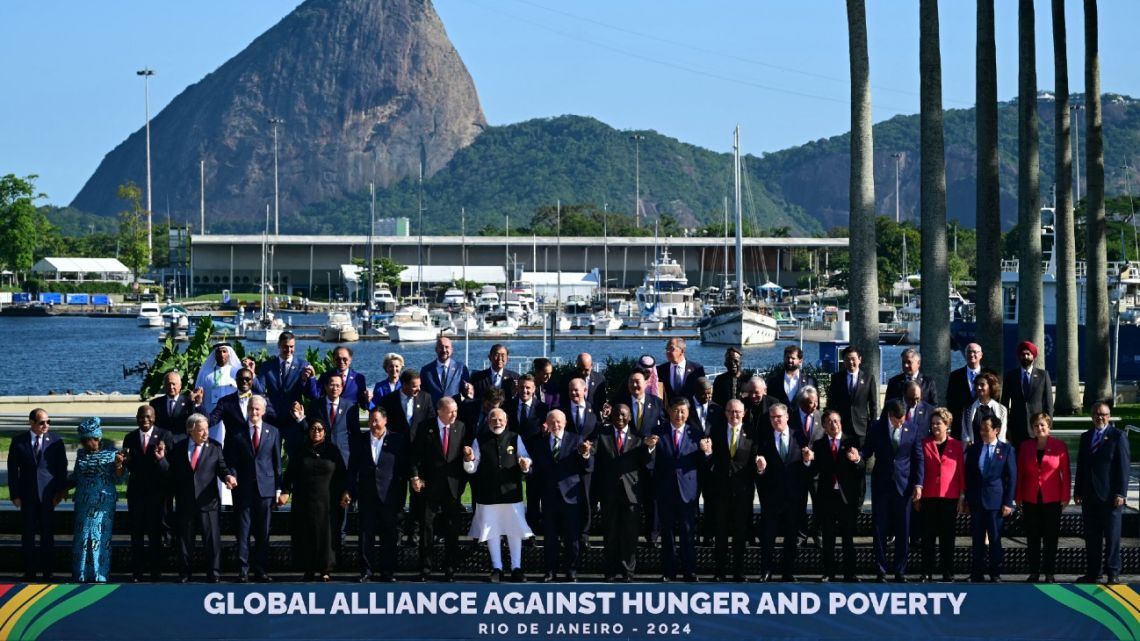The Brazilian stock market, Ibovespa, maintained its position above 127,000 points for the sixth consecutive trading session. This stability comes as investors await fiscal measures and react to Petrobras’ performance.
On Monday, November 18, 2024, the main index closed with a slight decrease of 0.02%, ending at 127,768.19 points. The US dollar weakened against the Brazilian real, closing at R$ 5.7474 ($1.00), a 0.70% decrease.
This shift reflects the complex interplay of domestic and international economic factors. Market participants are closely monitoring statements from key economic figures for guidance.
Finance Minister Fernando Haddad’s recent interview with Times Brasil/CNBC caught investors’ attention. Haddad stated that a new economic package is nearly finalized and will be announced soon.
This news has sparked interest in potential policy changes that could impact the market. Roberto Campos Neto, President of the Central Bank, addressed concerns about long-term interest rates.
 Ibovespa Stumbles Below Milestone Amid Global Uncertainty. (Photo Internet reproduction)
Ibovespa Stumbles Below Milestone Amid Global Uncertainty. (Photo Internet reproduction)He suggested that high rates stem from market fears about the current government’s commitment to fiscal responsibility. This statement underscores the ongoing tension between fiscal policy and monetary stability.
Brazilian Market Trends
The Focus Report, a weekly Central Bank survey of market analysts, revealed increased projections for interest rates and inflation in the coming year.
This adjustment in expectations highlights the challenges facing Brazil’s economy. In corporate news, Oi’s shares (OIBR3) led gains on the B3 exchange.
The telecom company’s stock surged nearly 120% in early trading. This dramatic rise followed regulatory approval for changes in Oi’s fixed telephony service regime.
Americanas (AMER3) continued its upward trend, with shares jumping over 90% during the session. This movement suggests an ongoing market reassessment of the company’s prospects.
Within the Ibovespa index, Brava Energia (BRAV3) and CSN (CSNA3) showed strong performances. Vale (VALE3), a major component of the index, saw its shares rise over 1%.
Growth, Challenges, and Global Influences
This increase aligns with the recovery of iron ore prices in China, highlighting the global nature of commodity markets. Petrobras (PETR4; PETR3) shares advanced more than 2%, reacting positively to the company’s 2025-2029 Business Plan.
Petrobras announced total investments of $111 billion, a 9% increase from the previous plan. The company also projected ordinary dividend distributions starting at $45 billion, with extraordinary dividends potentially reaching $10 billion (R$ 57 billion).
These figures demonstrate Petrobras‘ ambitious growth strategy and commitment to shareholder returns. On the negative side, Hapvida (HAPV3) and Azul (AZUL4) were among the biggest losers in the Ibovespa index.
This mixed performance across sectors reflects the diverse challenges and opportunities facing Brazilian companies. Internationally, U.S. markets focused on President-elect Donald Trump’s cabinet selections.
They also anticipated a slower pace of monetary easing by the Federal Reserve. Technology stocks, particularly Tesla, showed strength amid news of potential regulatory easing for autonomous vehicles.
In short, as the market navigates these various factors, investors remain cautious yet optimistic about Brazil’s economic trajectory.
The stability of the Ibovespa index suggests a balanced outlook, with potential for growth contingent on forthcoming fiscal measures and global economic trends.

 By The Rio Times | Created at 2024-11-18 21:44:01 | Updated at 2024-11-18 23:30:19
1 hour ago
By The Rio Times | Created at 2024-11-18 21:44:01 | Updated at 2024-11-18 23:30:19
1 hour ago








